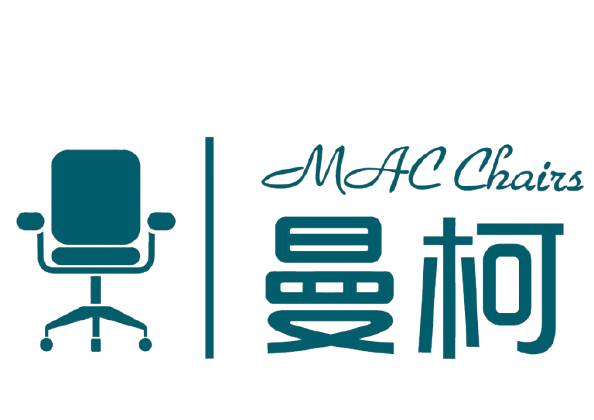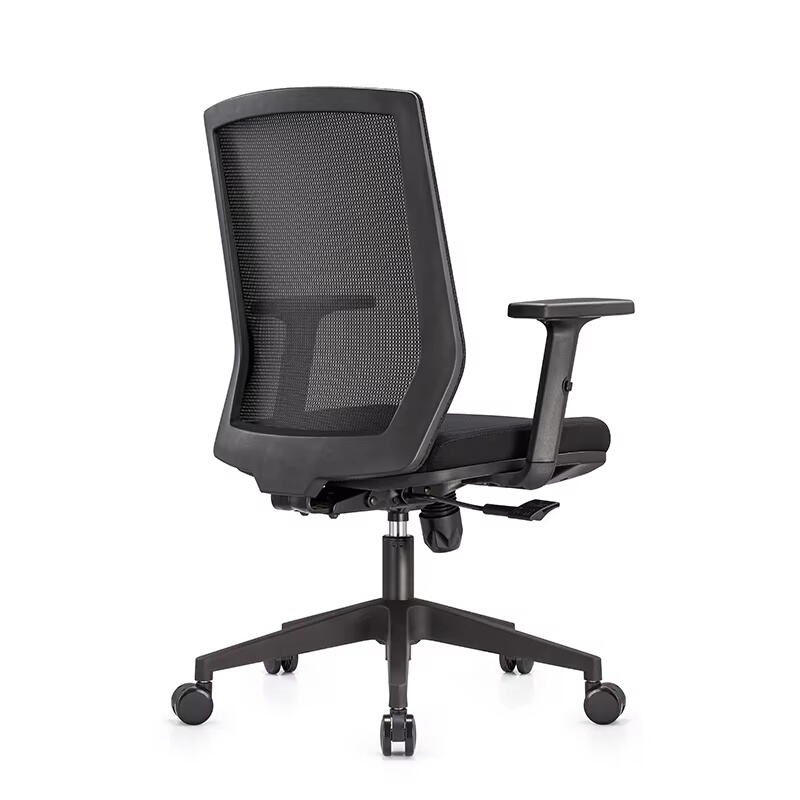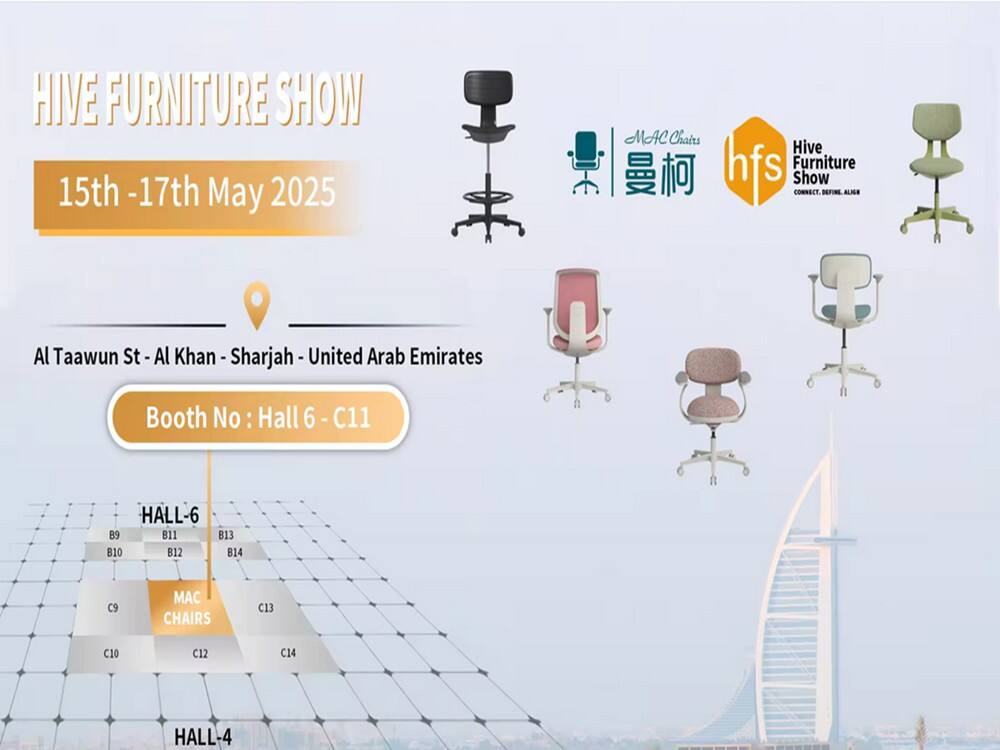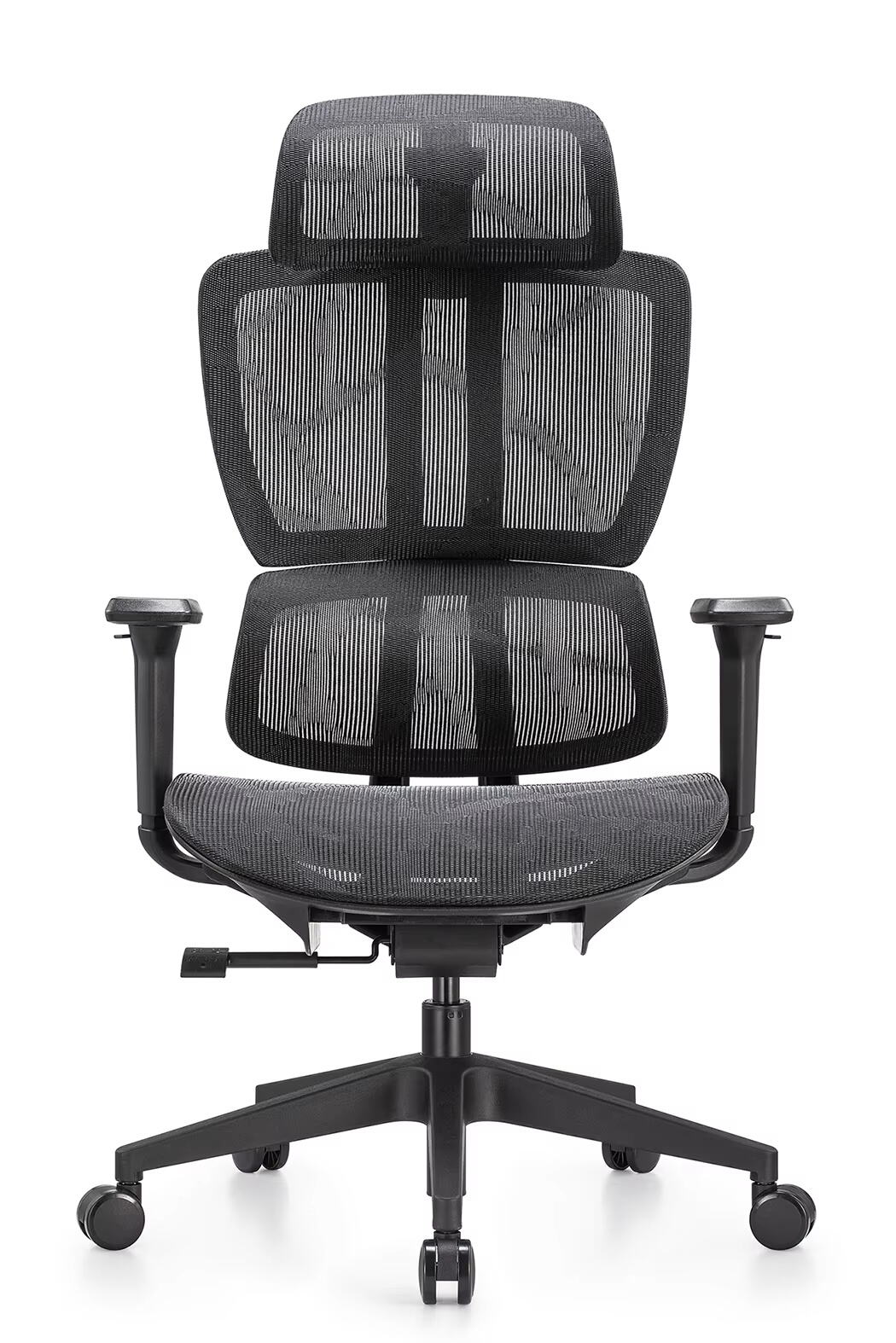
Why Sweat Accumulation Occurs in Traditional Office Chairs
Heat Retention in Non-Breathable Materials
Most traditional office chairs still rely on vinyl or man-made fabrics that don't breathe well at all. What happens? These materials basically trap heat right against skin, making people sweat way more than they should during long work hours. Some studies have found that sitting on non-breathable surfaces can actually raise body temps around 3°F higher than normal, something that definitely makes anyone uncomfortable and sweaty. Looking at how these materials perform in different office settings helps explain why so many workers end up dealing with unpleasant sweat buildup throughout the day. This points clearly to needing better options that let air circulate properly instead of creating mini-greenhouses against our backsides.
Impact of Cushioned Fabrics and Leather
Soft fabrics and leather might feel good at first but they actually trap heat and sweat because of how tightly packed the material is. Most office chairs with thick padding lose their ability to wick away moisture, which means people end up sitting in dampness after just a few hours at their desks. According to some studies, around two thirds of workers report discomfort from their chair materials during the workday. These numbers point to something pretty obvious really - we need better breathable alternatives that actually handle sweat properly instead of making things worse. Office furniture makers should focus on developing seating solutions that keep employees dry and comfortable throughout long work sessions.
Long-Term Discomfort During Extended Shifts
Office workers typically sit for 8 hours or longer each day, and when their chairs don't allow proper airflow, things get uncomfortable fast. People start sweating more and feeling uneasy after just a few hours at their desks. Sitting in these non-breathable seats for months on end actually causes real health problems down the road. We've seen cases where employees develop persistent skin irritations from sitting all day in hot, stuffy conditions. That's why companies should consider investing in better seating options. Ergonomic chairs designed with good ventilation help keep people cooler throughout the workday. These chairs aren't just fancy gadgets either they make a tangible difference in how workers feel at their desks. Many businesses report fewer sick days and higher morale once they switch to properly ventilated seating solutions for their staff.
Airflow Mesh Technology: Core Mechanisms for Breathability
Open-Weave Mesh vs. Solid Upholstery
Mesh with an open weave lets air flow through much better than regular solid fabric does, which means people don't get as sweaty sitting on them. Research indicates that this kind of mesh material cuts down on moisture around where someone sits by about 30 percent, making those long hours at the desk actually bearable. Regular upholstery just holds onto heat way too easily compared to these breathable alternatives we've been talking about. That makes all the difference when temperatures rise inside offices during summer months. So if comfort matters at workstations, manufacturers really should consider incorporating these kinds of breathable fabrics into their chair designs instead of sticking with traditional materials that just don't perform as well in real world conditions.
Temperature Regulation and Moisture Control
Mesh tech for airflow does more than just let air through it actually helps regulate body temperature pretty well. Most chairs with this feature come with fabric that pulls sweat away from the skin, which makes all the difference when someone sits there for hours on end. We've seen from actual usage that better temperature management means workers get tired less quickly and tend to be about 15 percent more productive in regular office situations. Makes sense why so many companies are investing in these kinds of chairs now. After all, keeping staff comfortable enough to stay focused matters a lot in today's fast paced work world.
Case Study: Comparing Ventilation in Office Guest Chairs
Looking at how different chair designs affect air flow has shown just how good mesh materials are at keeping people comfortable. When researchers tested office guest chairs, they found something pretty interesting - those with mesh tech had about half as many complaints about sweating problems compared to regular chairs without it. For companies thinking about updating their waiting area furniture, this makes sense. People sitting there don't sweat as much when using these mesh chairs, which obviously makes them more comfortable during meetings or while waiting. Plus, having better seating options actually shows clients and visitors that a business cares about creating a pleasant environment rather than just cutting corners on costs.
Ergonomic Design Features of Mesh Conference Chairs
Lumbar Support for All-Day Posture Alignment
Mesh conference chairs give people sitting at them a real edge when it comes to ergonomics because they come with built-in lumbar support that helps keep the spine aligned properly, which cuts down on back pain risks. And this matters a lot since studies indicate roughly 80 percent of folks working in offices deal with some sort of back ache这些问题 are often made worse by sitting in bad chairs all day long. The adjustable lumbar support found on many mesh models lets individuals tweak their seat to fit their body better, so they can actually stay in good posture throughout those endless meetings that seem to go on forever. Ergonomic specialists have been saying for years now that having proper lower back support combined with the fact that mesh materials let air circulate makes these chairs much more comfortable for extended use compared to other options out there.
Adjustable Recline and Tilt Lock Functionality
Mesh conference chairs that let people adjust how far back they recline plus engage tilt lock mechanisms make all the difference for comfort. Workers get to find their sweet spot whether sitting straight up for meetings or leaning back during long brainstorming sessions. Research from ergonomics experts shows offices where staff have access to adjustable seating report around 20% better morale and output levels. When companies equip their waiting areas and meeting rooms with these kinds of chairs, everyone wins. The flexibility means people don't end up slouching or straining their backs after hours at the desk. Just ask any office manager who's seen employees actually stay in their assigned seats instead of gravitating toward the break room couches throughout the day.
Multi-Directional Casters for Conference Room Mobility
The wheels on those office guest chairs and conference room seats really make a difference when it comes to getting around. People can roll from one spot to another without much effort at all inside meeting spaces. When someone needs to shift positions because the discussion moves or they want better visibility, these mobile chairs let them do that easily. Studies show that having chairs that actually move around helps reduce back pain and makes people more likely to participate actively in meetings. Conference rooms are constantly changing setups anyway, so good chair mobility through those multidirectional casters keeps things adaptable and conversation flowing naturally throughout the space.
Optimizing Comfort for Extended Work Periods
Seat Depth Adjustments for Proper Weight Distribution
Adjusting seat depth really matters when it comes to spreading body weight properly across the chair, something that makes all the difference for people who sit for hours at a desk or in meetings. Chairs with adjustable seats take pressure off the hips and thighs area, reducing that annoying ache that builds up over time. Most ergonomics guides these days put seat depth right up there as one of the top features workers should look for. People actually stay focused longer and feel better overall when they can tweak their seating position to fit their body shape. Studies have shown again and again that chairs with adjustable depth settings lead to happier employees and fewer complaints about back pain. For offices looking to upgrade their furniture, adding adjustable depth options is probably worth every penny spent.
Armrest Customization in Conference Table Setups
Armrests that can be adjusted are really important when setting up conference tables because they let people sit in different ways and provide proper support where needed. People who attend long meetings will notice a big difference in comfort levels when their armrests match their body shape and size. Research shows that being able to adjust both the height and width makes all the difference for how comfortable someone feels at their desk. When companies invest in these kinds of adjustable features, they're actually creating workspaces where everyone can participate better without getting sore or distracted. Just imagine trying to take notes through an entire presentation with arms hanging off the sides of a table versus having them properly supported.
Preventing Fatigue in 8+ Hour Shifts
Adding ergonomic elements to office chairs makes a real difference in fighting off tiredness after long days at work, something that helps maintain employee well being in general. Research shows people who sit in properly designed chairs report fewer complaints about fatigue around 30% less according to some studies, which means workers stay sharper and focused longer through their shifts. Most occupational health specialists suggest simple things like standing up every hour or so and adjusting seat height when needed to keep things running smoothly in the workplace. Companies that actually care about worker comfort tend to see fewer problems related to poor posture and back pain, plus everyone gets more done without constantly feeling drained from sitting all day.
Choosing Airflow Mesh Chairs for Shared Workspaces
Durability Requirements for High-Traffic Areas
Durability should be at the top of anyone's list when picking out office chairs for those busy spots where lots of people come and go throughout the day, especially in shared work areas. Mesh chairs with good airflow really shine here since they hold up better against all that constant use compared to regular fabric or leather seats. Some tests actually show these tough mesh options can handle about 25 percent extra weight before showing signs of stress, which makes sense why so many offices go this route nowadays. Looking at what happens over time matters too. Chairs built solidly last longer, save money on replacements down the road, and just plain make more sense in places where dozens of workers might sit in the same spot during different shifts.
Maintenance Advantages Over Fabric Conference Chairs
Mesh chairs have a real edge when it comes to maintenance over those fabric conference chairs we all know too well. Just grab a damp cloth and wipe them down quick. No need for special cleaners or deep cleaning sessions. Studies show that this kind of easygoing maintenance helps chairs stay looking fresh much longer while keeping germs at bay, which matters a lot in offices where people share desks and meeting rooms daily. Fabric options tell another story entirely. These usually demand vacuuming, spot treatments, sometimes even professional cleaning every now and then. That adds up fast on the bottom line. So companies switching to mesh seating typically save money in the long run and create cleaner workplaces simply because there's less hassle involved in keeping them presentable.
Budget Considerations for Bulk Purchases
When buying airflow mesh chairs for office spaces where many people work together, money matters are really important. Buying these chairs in large quantities usually saves money, sometimes getting discounts around 10-15%. For companies trying to stretch their budgets, this makes sense because they spend less per chair while still getting decent quality. Most offices find that going for bulk orders works well since they need so many chairs anyway. What's great about this strategy is that even though they save cash upfront, workers still get comfortable seats that last longer. Comfortable seating means employees stay productive throughout the day without complaining about back pain from sitting too long on cheap furniture.










